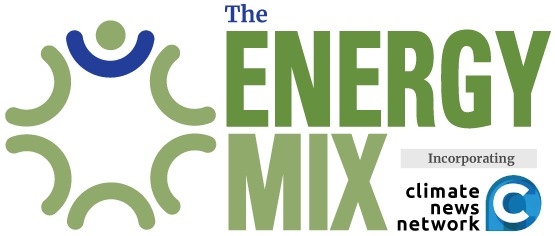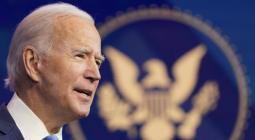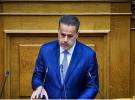The actual Paris withdrawal will only take effect a year after the U.S. formally notifies the United Nations, and it was unclear as The Energy Mix went to virtual press Monday evening whether the letter had already been sent.
Climate advocates say Trump’s action will undermine global climate action and make it less likely that the U.S. will meet its emission reduction targets. The New York Times reports that U.S. emissions have fallen 20% since 2005, but would need to “decline nearly 10 times as fast each year as they’ve fallen over the past decade” to meet the country’s current climate commitments.
Stepping away from Paris “could also hurt the U.S. by giving China a leg up on clean energy manufacturing,” Politico adds, and in international climate diplomacy, as well.
Protecting the Paris Promise
When Trump took office in 2017 with a similar plan to leave the Paris agreement, the U.S. immediately saw cities and states, civil society organizations, and 630 businesses and investors step up to fill the gap as best they could. By the time the COP23 climate summit convened in Bonn later that year, the We Are Still In coalition was a constant presence, with its own pavilion at the conference site.
This time around, the pushback was immediate, with Governors Kathy Hochul of New York and Michelle Lujan Grisham of New Mexico coordinating the state-level response.
“We write as co-chairs of the United States Climate Alliance, a bipartisan coalition of two dozen governors representing nearly 60% of the U.S. economy and 55% of the U.S. population, to make it clear to you, and the rest of the world, that we will continue America’s work to achieve the goals of the Paris Agreement and slash climate pollution,” they declared, in a letter to UN Climate Secretary Simon Stiell.
“Our states and territories continue to have broad authority under the U.S. Constitution to protect our progress and advance the climate solutions we need,” Hochul and Grisham added. “This does not change with a shift in federal administration,” and “it’s critical for the international community to know that climate action will continue in the U.S.”
Gina McCarthy, the Obama-era White House climate advisor and Environmental Protection Agency administrator now serving as managing co-chair of America Is All In, added that Trump’s administration “is abdicating its responsibility to protect the American people and our national security. But rest assured, our states, cities, businesses, and local institutions stand ready to pick up the baton of U.S. climate leadership and do all they can—despite federal complacency—to continue the shift to a clean energy economy.”
Paris Agreement architect Laurence Tubiana, now CEO of the European Climate Foundation, added that “the U.S. withdrawing from the Paris Agreement is unfortunate, but multilateral climate action has proven resilient and is stronger than any single country’s politics and policies.” She added that now it’s time for Europe, “alongside other partners”, to step up.
“By pushing forward with a fair and balanced transition, it can show that ambitious climate action protects people, strengthens economies, and builds resilience.”
The We Mean Business Coalition added that “one country’s decision does not change the global course of action,” any more than it did in Trump’s first term.
“World leaders made a historic commitment in Paris to keep the world within safe temperatures so that future generations can prosper,” the coalition wrote. “Similarly, world governments affirmed their commitment to accelerate the transition away from fossil fuels at COP28.
And now, “many of the world’s major economies are putting forward ambitious commitments in their updated national climate plans, as designed by the Paris Agreement. They understand that these plans are a mechanism to attract investment to their countries and gain competitive advantage.”
‘Worst Case Scenario’ for Wind
But that competitive advantage may soon fade for the United States. Trump’s late Monday night reveal on the fate of U.S. wind farms means that “the worst case scenario for the wind industry is here,” Heatmap headlines, with an executive order ending all new permits for a renewable energy source that had advanced significantly under former president Joe Biden.
Trump ordered that the U.S. government “shall not issue new or renewed approvals, rights of way, permits, leases, or loans for onshore or offshore wind projects” pending what the order describes as a “comprehensive assessment” of the industry’s economic and environmental impacts, among other factors.
“This affects all offshore wind development in the U.S., because all of that takes place in the Outer Continental Shelf, an ocean expanse under federal control that is leased for all kinds of energy production,” Heatmap writes. “It also impacts wind projects on federal lands. Although the extent of the impact to onshore wind is unclear because some wind projects are on state lands, project developers often must get approvals under federal environmental and species protection laws, so an end to permits will be quite painful for the sector.”
Trump also ordered the U.S. Interior Department to search for “any legal basis” in existing wind energy leases that would allow the administration to terminate or amend them on grounds of “ecological, economic, and environmental necessity.”
Three other executive orders give a boost to the rare earth metals that are essential components for battery manufacturing, Heatmap reports separately.
Dismantling Biden Policies
In his inaugural address earlier in the day, Trump promised a “golden age of America” at his inauguration ceremony, receiving standing ovations as he vowed to dismantle Biden’s green energy policies, including a US$7,500 electric vehicle rebate and non-binding production target frequently misinterpreted as an EV mandate, and to pursue his “Drill, baby, drill” agenda for oil and gas.
“America will be a manufacturing nation once again,” Trump declared, evidently missing the memo on his country’s clean energy manufacturing boom under Biden and the “hiring spree” it set off. “And we have something that no other manufacturing nation will ever have: the largest amount of oil and gas of any country on Earth, and we are going to use it.”
The ceremony, which took place indoors in the U.S. Capitol Rotunda due to (what Washington, DC considers) “dangerously cold weather”, was attended by a smaller-than-usual cast of political figures, along with some of the wealthiest people on the planet, including the CEOs of major tech companies like Tesla, Google, and Apple.
After the address, Trump acted on a promise to sign nearly 100 executive orders that he said would “begin the complete restoration of America and the revolution of common sense.” This is only the fourth time since 1937 that a president has issued executive orders on inauguration day, and the number of day-one orders vastly exceeds those of previous presidents.
News about the first executive orders being signed started to roll out in early afternoon. Around 5 PM Eastern Time, there was “a stack” of orders on a table at the Capital One Arena where Trump supporters had gathered.
Trump held back on his previous threats to impose 25% tariffs on all imports to the U.S., including from neighbouring countries Canada and Mexico, at least temporarily. Instead, the president ordered federal agencies to “study trade policies and evaluate trade relations”, a step that could lead to taxes on imports in the future, the Globe and Mail says.
Trump’s kidding/not kidding mutterings about annexing Canada have shifted swiftly to the centre of the country’s political conversation, raising fears that an economic “annexation” has already begun. The tariff threats have triggered concerns from Canada about impacts on its fossil fuel exports to the U.S.—though it could also raise gas and electricity prices for Americans—creating a rift between Alberta Premier Danielle Smith and all other federal and provincial leaders on how to respond.
Related: Trump’s ‘Annexation’ of Canada Has Already Begun.
Here’s How Energy Alternatives Help Smother It.
A Quest for ‘Liquid Gold’
Trump’s order to declare a “national energy emergency” could open up new areas to oil and gas drilling—including in now-protected parts of Alaska—reverse Biden’s January, 2024 pause on liquefied natural gas (LNG) exports, and put more power in Trump’s hands to facilitate new fossil fuel infrastructure like pipelines, reports Axios. Taken together, the orders are part of a plan to ramp up oil and gas production and “will bring prices down, fill our strategic reserves up again—right to the top—and export American energy all over the world.”
“We will be a rich nation again,” Trump declared during the inauguration, “and it is that liquid gold under our feet that will help to do it with my actions.”
Those statements overlook the reality that the U.S. already dominates global oil and gas production, partly through Biden’s own approvals for oil and gas projects. And it’s not at all clear that investors will allow companies to deliver on Trump’s oil and gas agenda, The Energy Mix reported earlier this month. Politico says the industry may be hesitant to drill more—despite its public calls to do so, backed by lavish donations to Trump’s re-election campaign—to avoid flooding the market and driving down prices.
Revoking EV Subsidies
Despite his close tied with Tesla founder Elon Musk, Trump also vowed in his address to revoke U.S. electric vehicle subsidies to “save our auto industry,” as part of his “sacred pledge to our great American auto workers.”
“In other words, you’ll be able to buy the car of your choice, build automobiles in America again at a rate that nobody could have dreamt possible just a few years ago.”
Not that those choices were ever in doubt. Biden did not actually impose an EV mandate, he did issue a 50% EV production target for 2030 and policies like consumer credits and tailpipe emission standards to hasten broader EV adoption. Undoing those actions will take time, however, and in the case of supports available through legislation he will need an act of Congress, writes Politico. Musk has said an action to remove current subsidies for EV manufacturing would hurt his competitors more than it would Tesla.
The wider auto industry, however, has been asking Trump to retain Biden’s support for EV sales, now that automakers have invested heavily in the direction the rest of the global auto industry is pursuing. “You don’t want one automaker sticking to making the cheapest fossil fuel cars to sell domestically, while the other automakers are trying to make these investments to compete globally,” Stephanie Brinley, an analyst for the auto intelligence service at S&P Global Mobility, told the New York Times in November. “If you have a regulation on the books, then everybody has to play by the same rules.”
The Times says Trump is also expected to use his second term to pursue other actions that would strike at Biden’s climate legacy and the Green New Deal elements Biden-era legislation, like clawing back unspent funds from the Inflation Reduction Act (IRA). Biden’s team was anticipating that move, and his administration was rushing to finalize $9.8 billion in funding for as many projects as possible in its final days. Bloomberg put the tally at $27 billion.
On Friday, Reuters said 84% of the value of the IRA’s clean energy grants had been “obligated”, with contracts in place that Trump could not rescind—and additional projects had been announced, making it more politically difficult to cancel them. The large majority of federal clean manufacturing investments under the IRA have been located in Republican “red state” districts.
“It remains to be seen if [Trump] will try to unilaterally ‘impound’ the money, despite a 1974 law that says he can’t,” Politico writes.





